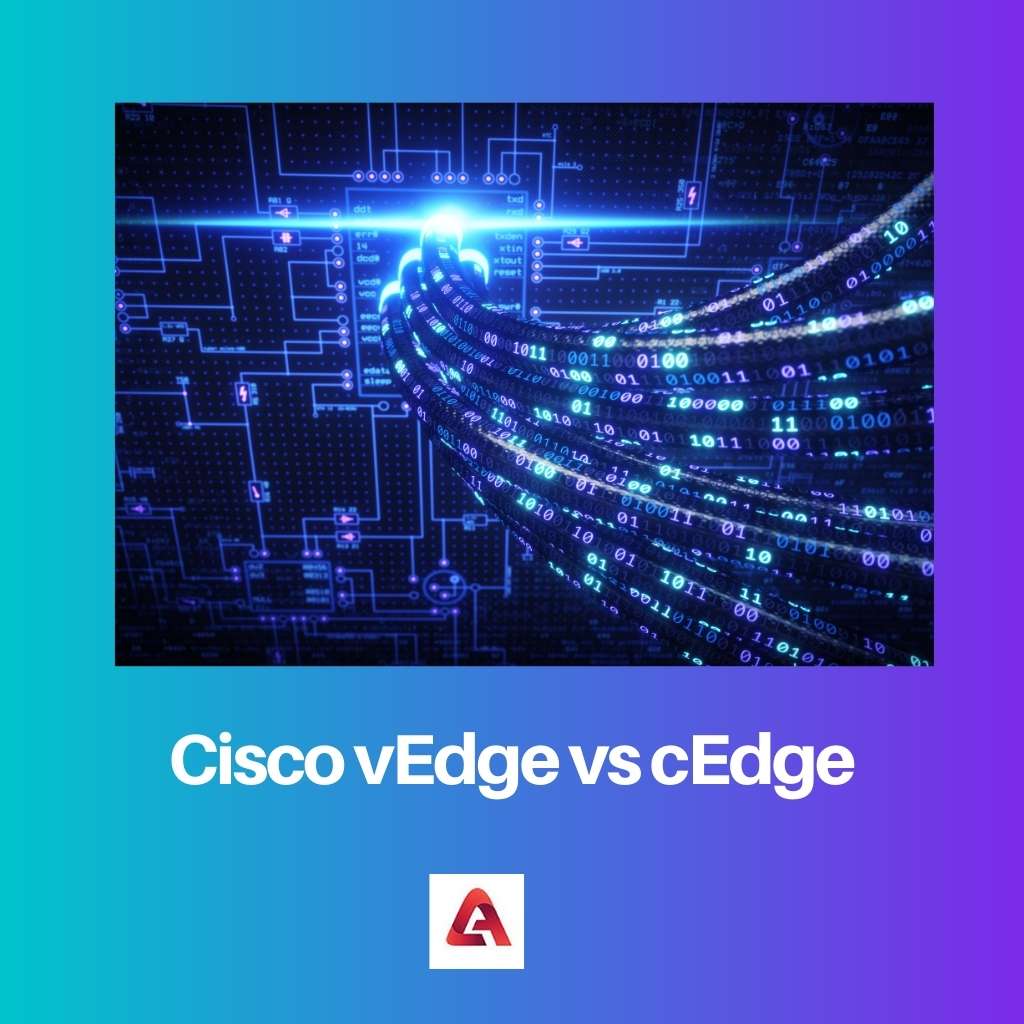The IT sector has seen exponential development on its horizon. The acceptance of cloud networking deploys greater challenges in maintaining agility and security over the cloud.
To address these issues SD-WAN has been established.
Thus here we will be talking about Cisco vEdge and cEdge routers. We will look into significant differences between them.
Key Takeaways
- Cisco vEdge and cEdge are two routers used in Cisco’s SD-WAN (Software-Defined Wide Area Network) solution.
- vEdge routers are designed for branch office and remote site connectivity, while cEdge routers are designed for data center connectivity.
- vEdge routers have a smaller footprint and are more cost-effective than cEdge routers.
Cisco vEdge vs cEdge
The vEdge Cloud router is a virtual machine that can be deployed and used in a variety of cloud computing environments and refers to the platforms running ViptelaOS. Cisco cEdge offers advanced security features like malware protection on cisco cEdge devices and refers to the platforms running IOS-XE SD-WAN.

Cisco vEdge is a router introduced by cisco to assess the increasing workload in today’s workspace. The IT sectors have come a far way from legacy infrastructure to the software-defined WAN.
Artificial intelligence has advanced spellbound, thus this router offers safe cloud computing in private or hybrid cloud ambiance. cEdge on the other hand is implemented with further advanced features to step up a notch.
It runs IOS XE (SDWAN). To support the ASR, CSR, and ISR Cisco introduced this router.
It works as a compatible edge and together they have been named as cEdge. They support the cisco software-defined WAN solution.
Comparison Table
| Parameters of comparison | Cisco vEdge | cEdge |
|---|---|---|
| Software | Viptela OS | IOS XE |
| Models | vEdge 100, vEdge 1000,etc | ISR 1000, 4000 series, etc |
| Features | 5 fixed Mbps ports (10/100/100), ethernet (vEdge 100b). | Modular architecture, the platform is open for third parties as well as cisco, etc (ENCS 5000 series) |
| Benefits | AES NI encryption, optimized IP security, etc | Interoperability, agility, flexibility, etc |
| Does it support ASR and ISR series? | No | Yes |
What is Cisco vEdge?
The advancement of artificial intelligence has resulted in a significant shift in the technological world. It has reached Himalayan heights thanks to its incredible smart adaptability.
Cisco introduced the viptela operating system in 2017 to keep up with the most significant changes in cloud networking. Cisco vEdge is powered by the viptela software.
Its goal is to extend software-defined Wide Area Networking overlay within the public cloud environment. Also, virtualizing the router can be advantageous in a variety of ways.
The hybrid cloud that is used provides the user with the flexibility and capacity to balance the increasing workload. The viptela operating system is used in the vEdge 100 models, which are further subdivided into vEdge 100b and vEdge 100m.
Then there’s the vEdge 1000, 2000, and 5000. The various models have different key features, and depending on your purpose, you can select the best one that meets your needs.
Then there is ISR1100 4G, 4G LTE, and 6G. NAND storage (internal) ranges from 4Gb to 120Gb across the vEdge 100 to 5000 series. Some of them have an external SD card slot, while others do not.
There are also traffic ports and an external USB host port. vEdge 100m-GB is available in Australia and Europe but not in the United States.
What is cEdge?
cEdge, on the other hand, is based on IOS-XE (SDWAN) and includes several additional features. CSR, ISR, ASR1K, ENCS, as well as cloud ISRv and CSRv routers, all support it. cEdge is one of two software-defined WAN routers available.
It is enabled by the vManager when discussing troubleshooting, provisioning, and configuration. In contrast to vEdge, cEdge includes some additional features.
Cisco AMP threat grid and AMP, snort intrusion, URL filtering, and integrated platform security are among them. Aside from that, there is the Umbrella DNS security and the enterprise firewall.
vManager functions as the solution’s management platform. Its primary function is to configure and monitor the system.
If you need advanced troubleshooting, you can use the system’s command-line interface. This platform also includes vBond, vSmart, and vAnalytics to provide secure and enhanced agility, interoperability, and flexibility for your cloud computing experience.
Some of the models include the ISR and ASR series, which include the operating system’s software image. Based on the model, you can enable the software-defined WAN capability (ISR 1000, 4000 series).
And then there are ENCS (you can enable software capability on the 5000 series of this model). Overall the platform assesses the extensive workload and helps balance it.
Main Differences Between Cisco vEdge and cEdge
- Cisco vEdge is powered by viptela OS, whereas cEdge is powered by IOS XE.
- Cisco vEdge lacks some of the features found in cEdge.
- In contrast to Cisco vEdge, cEdge’s operating system supports ISR and ASR.
- The advantages of Cisco vEdge include AES NI encryption, optimized IP-security, and so on, while cEdge aids in interoperability, agility, and flexibility.
- Cisco vEdge models include the vEdge 100, vEdge 1000, and so on, whereas cEdge models include the ISR 1000, 4000 series, and so on.




